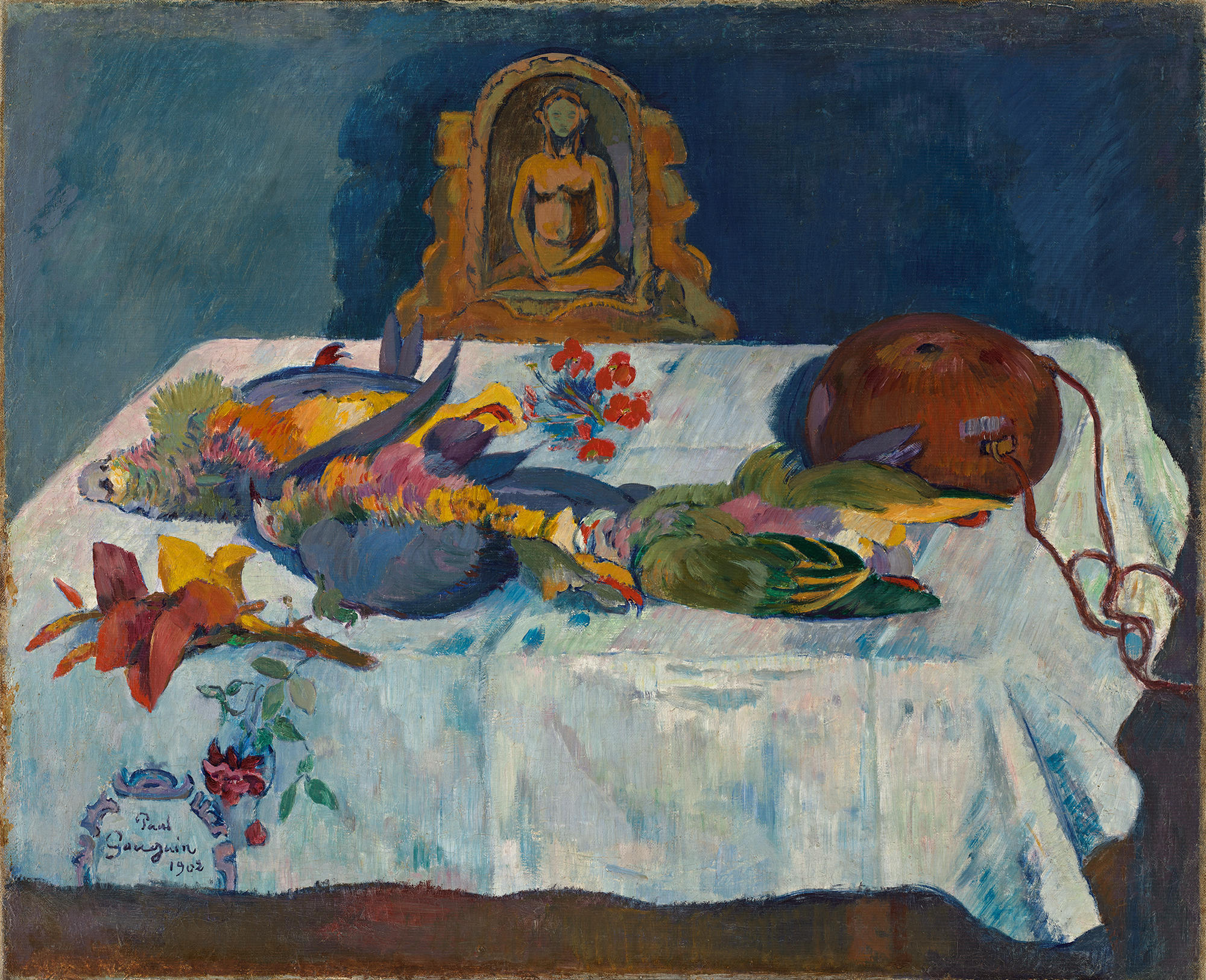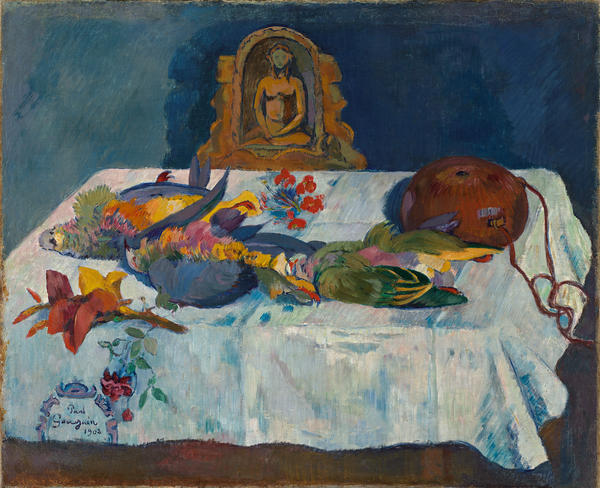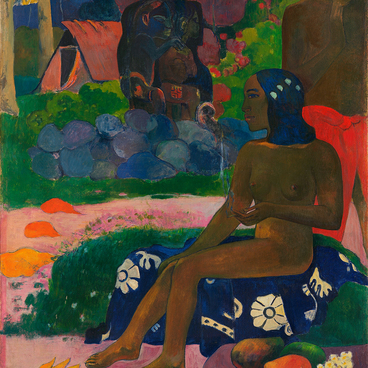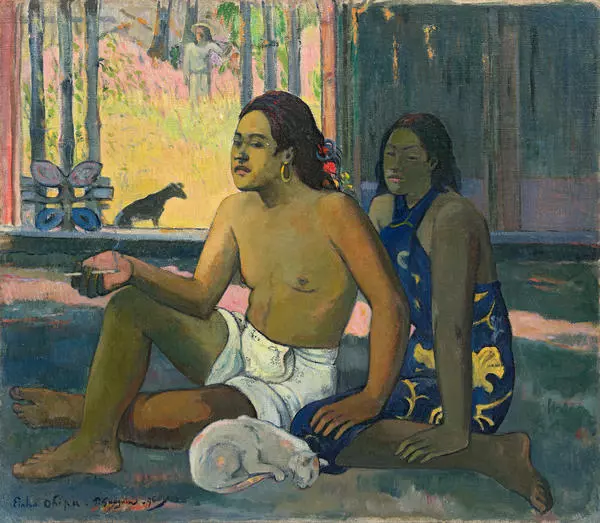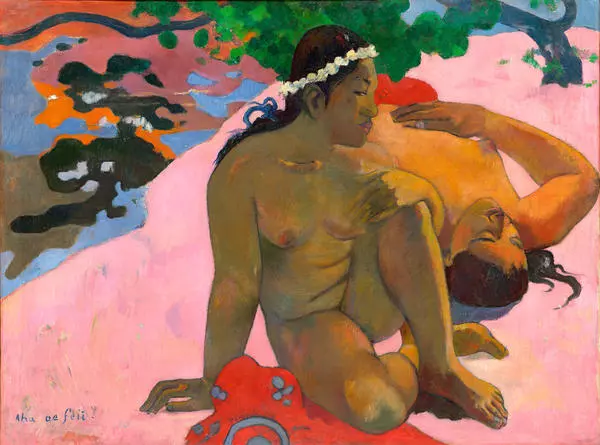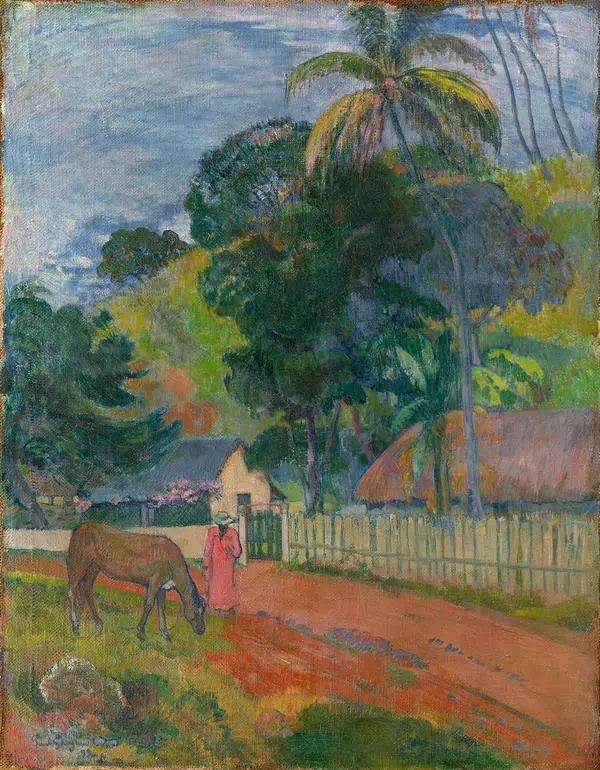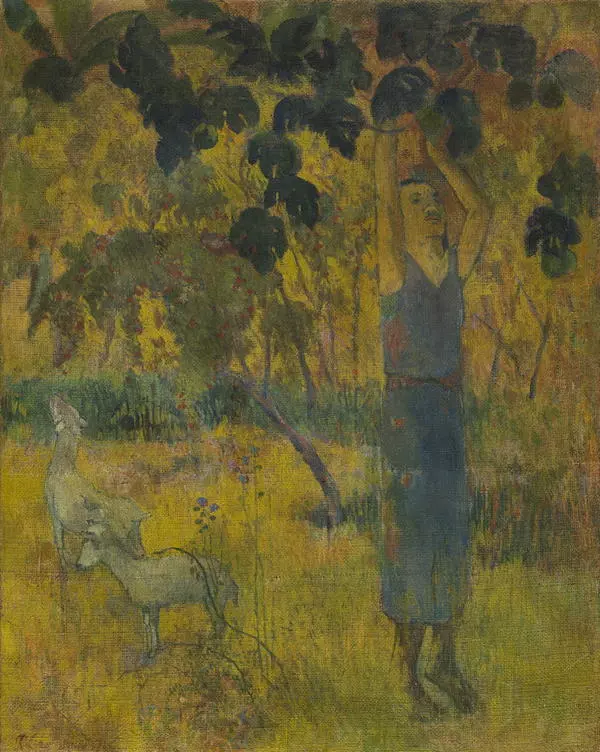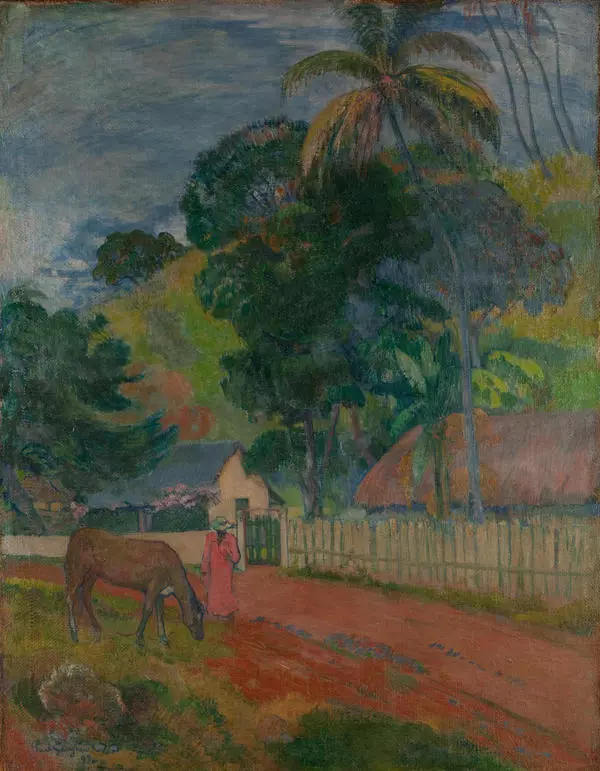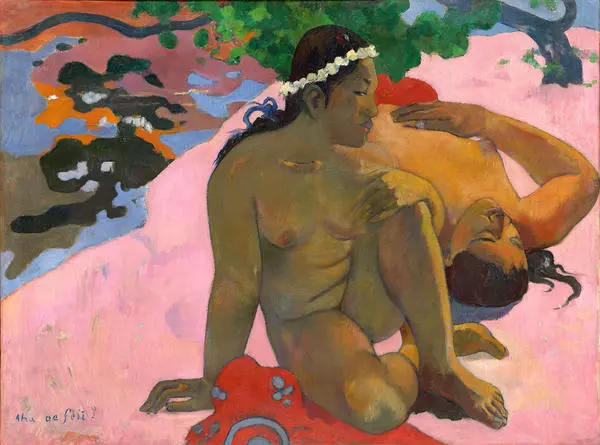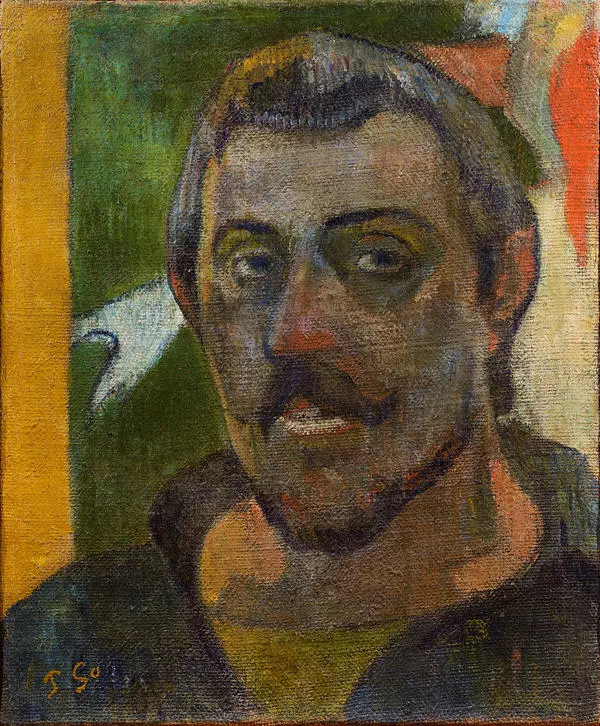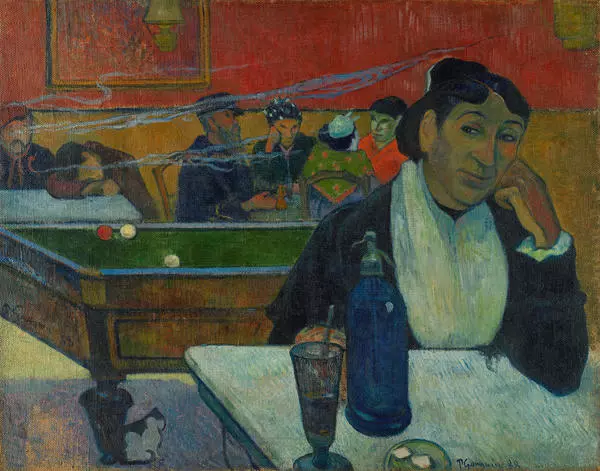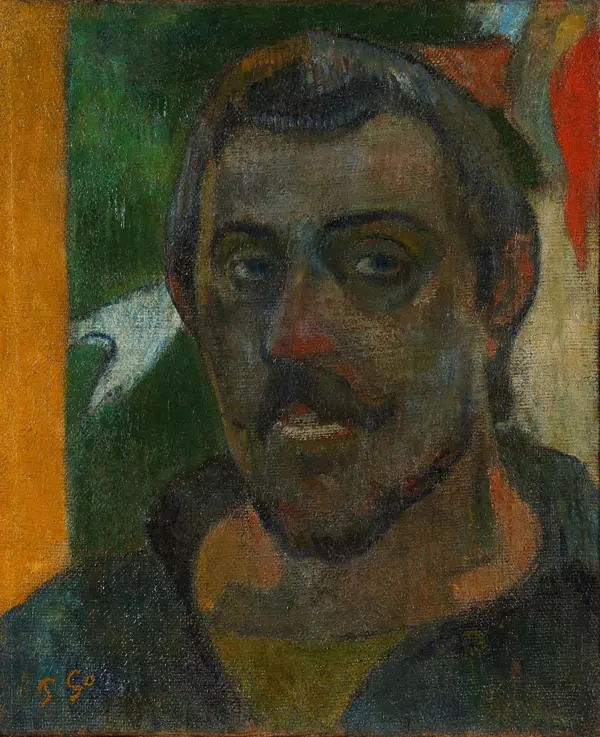Still-Life With Parrots was painted in the village of Atuona on Hiva-Oa island. In the background we can see the terracotta idol made by Gauguin that represents Hina, the Tahitian goddess of the moon. The presence of a participant in the Tahitian mythological dialogue about the destiny of humanity reveals the symbolic meaning of this work. Bright colors and distinct brush strokes conveying the tremulousness of life come into contrast with the hidden dramatic symbolism of the painting. Flowers that have been picked and are falling from a travel trunk with a tablecloth on it, shot game, a water flask made from a pumpkin – all of this demonstrates the transience of human life and the inevitability of death. This still-life was painted during Gauguin’s final months. The artist had moved (or escaped) from Tahiti to the Marquesas Islands, where he found his last home. The style of painting differs from his earlier Tahitian works. Instead of big decorative planes, the artist applies light vibrant strokes. Its dazzling beauty symbolizes the victory of art over the brevity of life for its creator – the artist.
Gauguin was one of the first European artists to address the tradition of “primitive” art, trying to bring back simplicity and innocence. He opened the expressive power of non-European cultures for the 20th-century masters. The flatness of shape, more intense colors, and decorativeness of compositions – all these findings of Gauguin’s later served as a starting point for the creative pursuits of subsequent generations of French artists.
Gauguin was one of the first European artists to address the tradition of “primitive” art, trying to bring back simplicity and innocence. He opened the expressive power of non-European cultures for the 20th-century masters. The flatness of shape, more intense colors, and decorativeness of compositions – all these findings of Gauguin’s later served as a starting point for the creative pursuits of subsequent generations of French artists.
